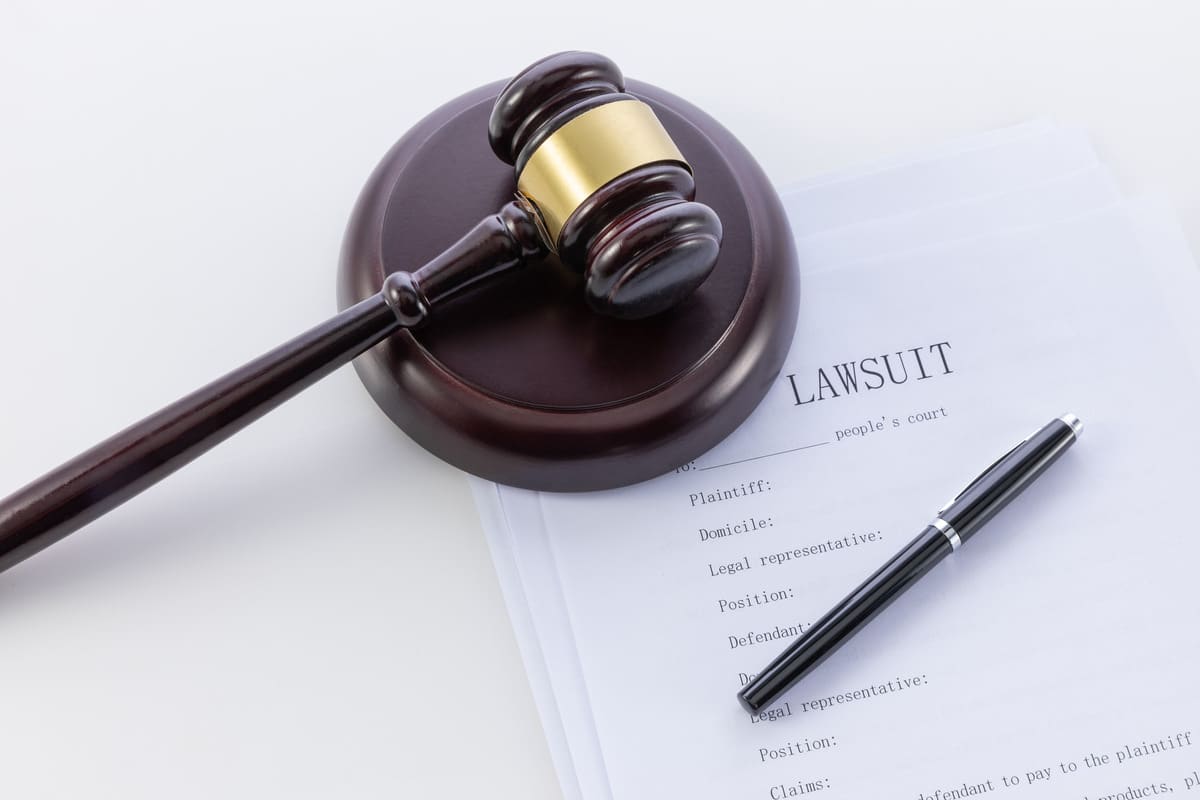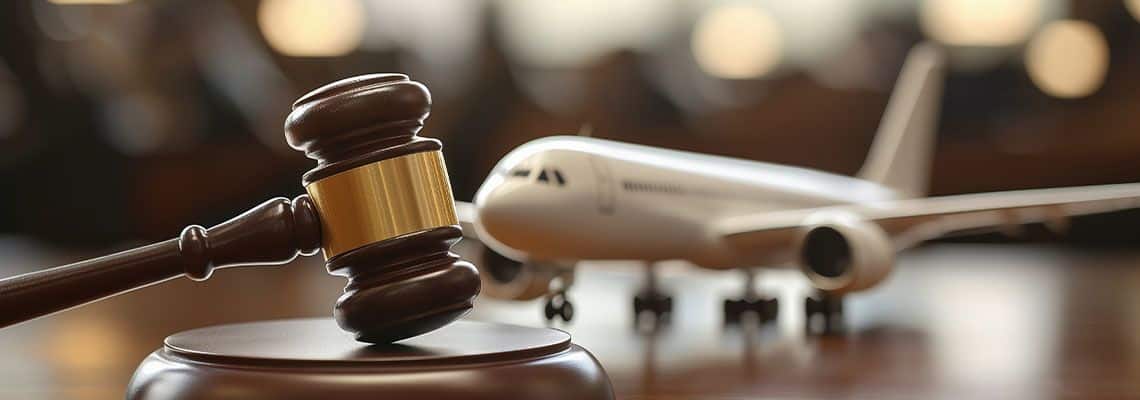$75M Lawsuit After Delta Plane Crash: Do You Know Your Rights?
When Vanessa Miles, a Detroit-based flight attendant, boarded her flight in February 2025, she didn’t expect to leave the runway upside down, injured, and traumatized. After a terrifying crash landing in Toronto, she’s now suing Delta and Endeavor Air for $75 million.
This case is more than headline news—it’s a powerful reminder that air travel accidents can happen, and when they do, injured passengers may be entitled to compensation.
Could you have a case, too?
Table of Contents
1. The Crash That Shocked the Airline Industry
2. Key Claims in the Lawsuit Against Delta & Endeavor Air
3. The Damages: What Vanessa Miles Is Fighting For
4. How Aviation Negligence Can Lead to Injury Claims
5. When Negligence Becomes a Legal Case
6. Who Can File a Claim After a Plane Crash?
7. The Importance of Legal Representation in Aviation Cases
8. What You Should Do If You’ve Been in an Aviation Incident
9. What This Lawsuit Means for Passengers Everywhere
10. Don’t Let the Airline Leave You Hanging
What Happened: The Crash That Shocked the Airline Industry
On February 17, 2025, Endeavor Air Flight 4819 was nearing the end of a routine trip from Minneapolis to Toronto. But as the plane descended into strong winds, things quickly spiraled out of control.
The aircraft landed too fast, skidded off the runway, flipped upside down, and caught fire.
Inside the cabin, chaos erupted. Passengers were thrown around, luggage flew from overhead bins, and the lights went out. Seatbelts held people suspended upside down.
Among them was Vanessa Miles, a flight attendant traveling as a passenger. She was knocked unconscious during impact and woke up hanging, drenched in jet fuel, surrounded by smoke.
Evacuation systems failed. Emergency slides didn’t deploy. People had to jump from the overturned plane onto the freezing tarmac—some severely injured, others in shock.
Miles waited nearly an hour for help in the bitter cold, suffering a traumatic brain injury, broken shoulder, and lasting PTSD.
Dozens were hurt that night, but the emotional scars may run even deeper.
Key Claims in the Lawsuit: Where Did Delta Go Wrong?

Here’s what the lawsuit claims went wrong:
1. An Inexperienced, Inadequately Trained Pilot Was in Control
One of the most troubling parts of the lawsuit is the claim that Delta and Endeavor put an undertrained pilot in the cockpit.
The pilot reportedly lacked sufficient experience, particularly in handling rough weather conditions like those on the night of the crash. Instead of ensuring their pilot was fully prepared, the airline may have rushed the training process to fill a staffing gap.
That kind of shortcut raises real concerns. Pilots aren’t just drivers—they’re responsible for hundreds of lives every time they fly. They need the right training and real-world preparation, not a fast pass to meet scheduling demands. When airlines skip steps, the consequences can be devastating.
2. Safety Checks Were Rushed—or Skipped Entirely
Miles’s lawyers say that safety procedures before and during the flight, including steps to be ready for emergencies, were either rushed or skipped. These checks are critical, especially when the weather is bad, like it was on February 17.
Not only does it violate safety regulations, but it also conveys the message that profit and efficiency take precedence over the preservation of human life.
3. Emergency Evacuation Procedures Failed When It Mattered Most
The fact that the plane’s escape slides did not open after the crash may have been the scariest part of the whole thing. The upside-down plane left many injured passengers to fend for themselves by jumping to the ground.
A few seconds can make the difference between life and death in flight. It’s not just annoying when safety gear breaks; it’s also dangerous and, in some cases, deadly.
4. Weather Warnings Were Ignored
Toronto was experiencing strong wind gusts and unstable landing conditions. The lawsuit claims the airline had ample warning that the approach could be dangerous but chose to proceed anyway.
Failing to delay or divert the flight, despite the risks, suggests a serious lapse in judgment—one that could have been avoided with better decision-making.
The Damages: What Vanessa Miles Is Fighting For
Vanessa Miles isn’t just asking for compensation—she’s asking for accountability.
Her $75 million lawsuit seeks damages for the devastating toll the crash has taken on her life, including:
- Traumatic Brain Injury (TBI): A serious, long-term condition that affects memory, focus, sleep, and cognitive function
- Orthopedic Injuries: Fractures in her shoulder and spine have required ongoing treatment and may impact her ability to return to work
- Emotional Trauma: Including post-traumatic stress disorder (PTSD), anxiety, and depression—often invisible injuries that can last a lifetime
- Career Disruption: As a trained flight attendant, her ability to work and support herself has been severely compromised
- Ongoing Medical and Psychological Care: She may require years of physical therapy, counseling, and specialized treatment
How Aviation Negligence Can Lead to Injury Claims
Airlines are entrusted with one of the most critical responsibilities: ensuring the safety of passengers at 30,000 feet. With that trust comes a legal duty to uphold the highest possible safety standards—from the moment you board until the moment you land.
But when corners are cut or protocols are ignored, the consequences can be catastrophic.
This is where aviation negligence law comes into play.
When an airline, its staff, or even a third-party contractor fails to meet expected safety obligations, they may be held legally and financially responsible for any resulting injuries.
Let’s break down some of the most common types of negligence that can lead to a personal injury claim:
1. Pilot Error or Inadequate Training
Pilots are highly trained professionals—but what happens when an airline rushes the training process or fails to properly prepare flight crews for emergency scenarios?
Negligence can occur when:
-
- A pilot misjudges altitude or speed during takeoff or landing
- A flight crew fails to follow established safety procedures
- The airline assigns a new or inexperienced pilot to high-risk flights (like Vanessa Miles’s case)
Just like in any other job, lack of experience combined with high pressure can lead to disaster—but in the sky, those mistakes can cause lasting injuries or death.
2. Mechanical Failure Due to Poor Maintenance
Commercial airplanes are advanced machines that require regular, detailed maintenance to stay safe. But in the race to stay on schedule and cut costs, some airlines may fall short on maintenance—and passengers pay the price.
Here are a few common examples of what mechanical negligence can look like:
-
- Landing gear or hydraulic systems that weren’t properly inspected
- Engine components or fuel systems with known issues that were ignored
- Emergency equipment—like slides or cabin lighting—that failed when needed most
If an airline or maintenance company fails to identify and fix a known issue, and that failure causes an accident, they may be liable for your injuries.
3. Unsafe Crew Conduct or Emergency Response
Flight attendants and crew must stay calm, move quickly, and follow their training in an emergency. Sadly, not all crews have the tools and training they need, nor do they have the help they need.
Negligence in this category can include:
-
- Inadequate emergency evacuation procedures
- Delays in assisting injured or unconscious passengers
- Failing to provide proper medical attention or basic care during or after an incident
If you were left to fend for yourself during an emergency—or worse, were hurt because the crew didn’t follow procedures—you could have a strong case.
4. Failure to Prepare for Weather or Landing Conditions
Pilots and flight crews must be fully aware of weather conditions before and during a flight. But when bad decisions are made—like attempting a landing during high winds or failing to divert the flight—passenger safety is jeopardized.
In some crash investigations, pilots continued to land despite red flags, or airlines pressured them to stay on schedule. These choices can lead directly to hard landings, runway overshoots, or even total aircraft loss.
If this sounds familiar, your experience may not have been an “accident”—it may have been the result of avoidable human error.
When Negligence Becomes a Legal Case

This isn’t just about justice—it’s about recovery. A successful aviation injury claim can help cover:
-
- Emergency and long-term medical bills
- Physical therapy and rehabilitation
- Emotional trauma, PTSD, or anxiety
- Lost wages and diminished future earning potential
- Pain and suffering
Who Can File a Claim After a Plane Crash?
You may have a valid legal claim if:
-
- You were a passenger during a crash, hard landing, or aborted takeoff
- You suffered physical injuries or emotional trauma
- You were not properly evacuated or assisted
- Airline personnel failed to follow safety procedures
- A third-party (like a maintenance company or manufacturer) contributed to the incident
Even flight attendants flying as passengers, like Miles, are eligible to file civil lawsuits separate from workers’ compensation.
The Importance of Legal Representation in Aviation Cases
Aviation cases are some of the most complex in personal injury law. Airlines often fight hard to minimize liability, and federal aviation regulations can be challenging to navigate without professional guidance.
A skilled attorney can:
-
- Preserve and analyze black box flight data
- Secure expert testimony on pilot training and aircraft operation
- Collect eyewitness statements
- Review FAA reports and airline safety records
- Calculate the full value of your losses—medical, emotional, financial
Don’t rely on the airline’s internal report. Get a legal team that will fight for your interests.
What You Should Do If You’ve Been in an Aviation Incident
Surviving a plane crash or emergency landing is a stressful ordeal, and the hours and days that follow can be just as difficult. Many victims are unaware that their behaviors following the occurrence might have an impact on their health, well-being, and potential legal claims.
Here’s a step-by-step guide to help you protect your rights and your recovery:
1. Seek Medical Attention Immediately—even if You Feel “Fine”

After an aviation incident, adrenaline can mask serious injuries. You might walk away feeling shaken but okay—only to discover later that you’ve suffered a concussion, internal injuries, or even a spinal issue.
Never assume you’re unhurt.
Get checked by medical professionals as soon as possible. Medical records from the initial hours after the incident are crucial evidence if you decide to pursue a claim later on.
2. Document Everything
If you’re able, start gathering details. Think of yourself as a witness to your own case.
-
- Photos or videos of the aircraft, injuries, or evacuation
- Notes about what you saw, heard, or experienced
- Names and contact information of fellow passengers or crew
- Copies of hospital records, prescriptions, or discharge instructions
These real-time details are far more potent than anything recalled months later—and they could make or break your case.
3. Report the Incident to Authorities and Airline Staff
Be sure the proper channels formally document the event:
The more paper trail you leave, the harder it becomes for the airline to downplay what happened.
4. Do Not Sign Anything Without Legal Advice
Airlines and their insurance companies may quickly offer vouchers, settlements, or paperwork that seem like goodwill gestures. But signing anything—even something that seems minor—can waive your rights to sue or limit your compensation.
Before you agree to anything:
-
- Avoid verbal or written agreements
- Politely decline early offers
- Contact a personal injury lawyer who understands aviation law
Even a small misstep here can cost you thousands (or more) in potential compensation.
5. Speak to a Personal Injury Lawyer Who Specializes in Aviation Law
Accidents in the air are not the same as car accidents or trips and falls. They involve a lot of complicated federal rules, laws about airline liability, and foreign agreements. You need a lawyer who knows how to navigate that area effectively.
Look for an attorney with:
-
- Experience handling aviation or transportation injury claims
- Access to flight experts, investigators, and medical professionals
- A history of taking on large corporations and winning
Most aviation lawyers offer free consultations and work on a contingency basis—meaning you pay nothing unless they win your case.
In moments like these, it’s natural to feel a bit overwhelmed. Your actions really do make a difference!
By getting medical help, documenting your experience, and seeking legal support, you’re not only taking care of your health—you’re also advocating for your rights.
If the airline didn’t keep you safe, it’s totally fair to hold them accountable.
Looking for a little guidance to kick things off? We’re all set whenever you are!
What This Lawsuit Means for Passengers Everywhere
This case is about more than just a single flight or crash. It shines a light on systemic problems in the airline industry, from rushed pilot training to overlooked safety protocols and delayed emergency responses.
Vanessa Miles is speaking up to demand accountability—and you can take action, too.
When an airline, its staff, or even a contracted third party fails to meet expected safety standards, they can be held legally and financially responsible for the injuries that result.
Don’t Let the Airline Leave You Hanging
If you’ve been hurt in a flight-related incident, you may be entitled to compensation—even if the airline hasn’t admitted fault.
The team at Roxell Richards Law Firm is here to help. We handle cases involving pilot error, equipment failure, PTSD, and more. Don’t sign anything from the airline or their insurer until you’ve spoken with a lawyer.
Contact us today for a free, confidential case review.
Frequently Asked Questions
Can I sue if I didn’t suffer physical injuries, but I now have PTSD or anxiety?
Yes. Emotional trauma can be just as severe as physical injuries. If the psychological impact of a crash or emergency landing is interfering with your daily life—such as causing nightmares, anxiety, or inability to work—you may be entitled to compensation for emotional distress and mental health treatment.
What if the pilot error wasn’t obvious?
How long do I have to file a claim?
Do I need to be a U.S. citizen to sue a U.S. airline?
What kind of compensation can I receive?
– Medical expenses (past and future)
– Emotional distress (like PTSD, anxiety, depression)
– Lost income or earning potential
– Pain and suffering
– Out-of-pocket expenses related to the incident
